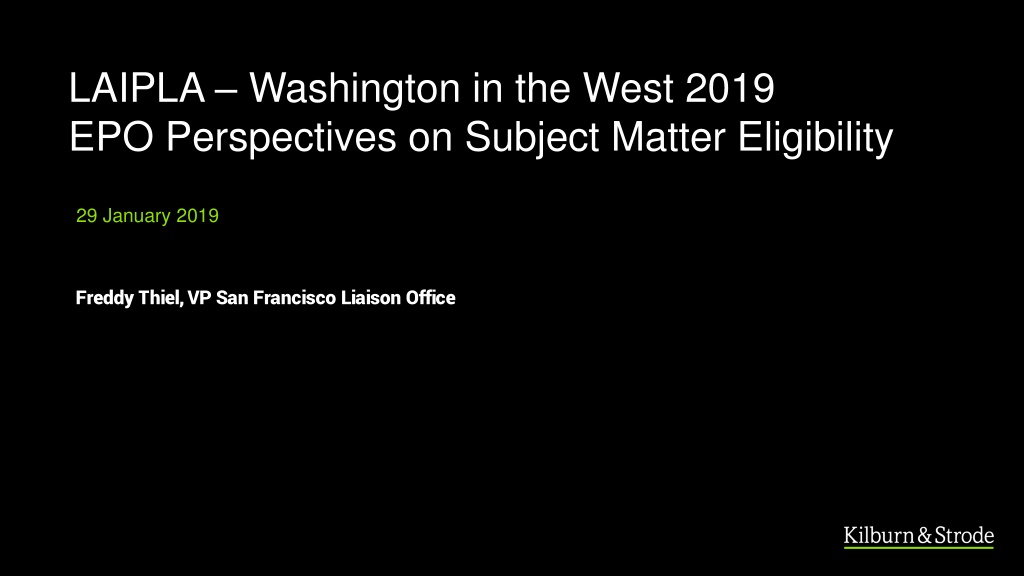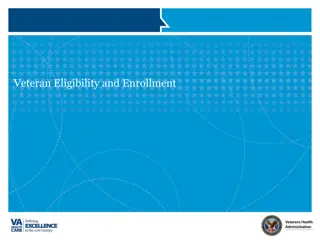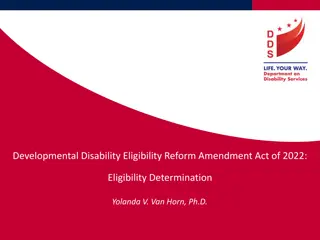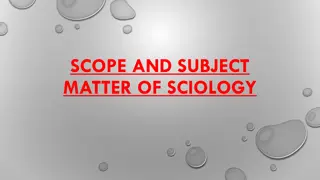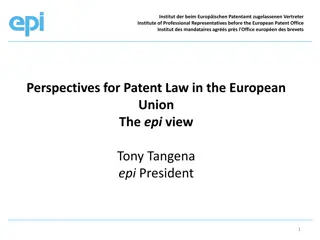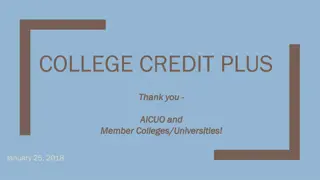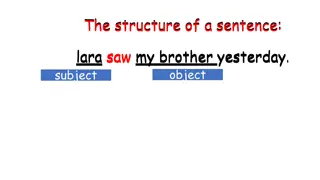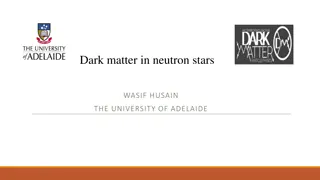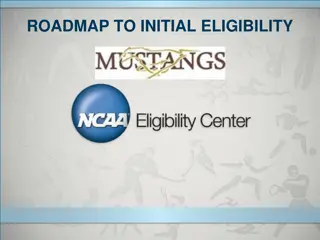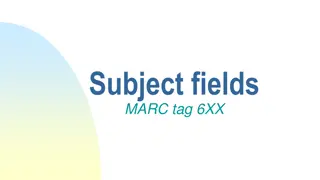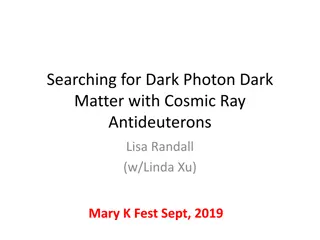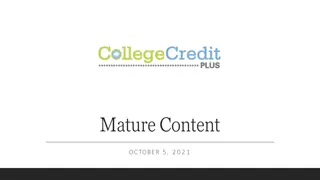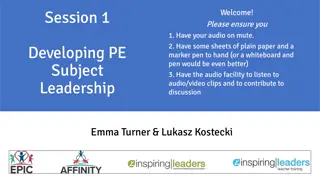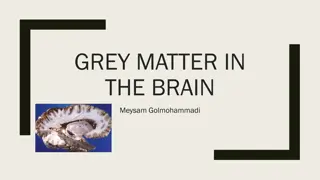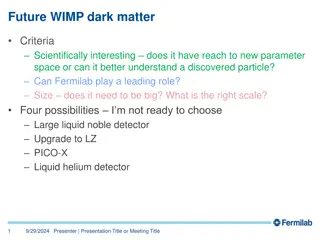EPO Perspectives on Subject Matter Eligibility
This content delves into the two-step approach for Computer Implemented Inventions (CII) and the first step of exclusion criteria according to the European Patent Convention. It provides insights on determining patent eligibility based on technical character and inventive step, with examples highlighting various scenarios that are either included or excluded from patentability.
Download Presentation

Please find below an Image/Link to download the presentation.
The content on the website is provided AS IS for your information and personal use only. It may not be sold, licensed, or shared on other websites without obtaining consent from the author.If you encounter any issues during the download, it is possible that the publisher has removed the file from their server.
You are allowed to download the files provided on this website for personal or commercial use, subject to the condition that they are used lawfully. All files are the property of their respective owners.
The content on the website is provided AS IS for your information and personal use only. It may not be sold, licensed, or shared on other websites without obtaining consent from the author.
E N D
Presentation Transcript
LAIPLA Washington in the West 2019 EPO Perspectives on Subject Matter Eligibility 29 January 2019 Freddy Thiel, VP San Francisco Liaison Office
2 2 Freddy Thiel European Patent Attorney 13 years in-house, including 10 years at Orange harvesting inventions for the company s international labs Heading K&S liaison office in the Bay area Specialist technical areas: IT & software | Mechanical products | GUI | Telecommunications | Capturing odd inventions | Inventor mentoring
CII Inventions Two step Approach 3 1st step: Exclusions (Art. 52, Rule 42, 43 EPC) Easy! The claimed subject-matter must have a technical character. But claims may contain a mix of technical and non-technical features. The non-technical features are the features which in isolation are directed to non-patentable subject matter. Not so easy! 2nd step: Inventive Step (Art. 54, 56 EPC) The presence of an inventive step may only be supported by those features of the claimed invention, assessed as a whole, which contribute technical character, i.e. those feature which contribute to the solution of a technical problem by providing a technical contribution. There must be a non-obvious technical contribution over the prior art.
CII Mixed Type Inventions The First step 4 Article 52(2) EPC The following in particular shall not be regarded as patentable inventions within the meaning of paragraph 1 a) b) discoveries, scientific theories and mathematical methods aesthetic creations c) schemes, rules and methods for performing mental acts, playing games or doing business, and programs for computers; d) presentations of information ...only excluded if application or patent relates to such subject matter or activities as such (Article 52(3))
CII Mixed Type Inventions Examples of first step application 5 First step: Easy! A method for financial-trading systems on which trades between two parties who are to exchange payment are settled by a third party in ways that reduce "settlement risk Excluded as abusiness method A computer with a database of parties who have traded and exchange payments settled by a third party' Not Excluded A computer-implemented method to settle by a third party payments exchanged between two parties Not Excluded A program to do the method of settling by a third party payments exchanged between two parties Not excluded
CII Mixed Type Inventions Second step 6 Not so easy! Features with technical effect in the claim as a whole. Obvious? Closest prior art Claim Technical character Non-technical character Features making no technical contribution cannot contribute to inventive step and therefore can appear in the formulation of the objective technical problem
CII Mixed Type Inventions Second step Steps of the Problem/Solution Approach applied to mixed-type inventions (Guidelines, G-VII 5.4) i. Determine the features contributing to technical character on the basis of the technical effects achieved in the context of the invention ii. Determine a suitable starting point as closest prior art based on these features iii. Determine the differences with respect to closest prior art Determine their technical effect(s) in context of the claim as a whole Identify from these differences the features making a technical contribution and those which do not. a) If no differences (at all) then lack of novelty (Art. 54) b) If no technical contribution then lack of inventive step (Art. 56) c) If differences include features making a technical contribution
CII Examples: Vicom decision T 0208/84 Claim: 1. A method of digitally processing images in the form of a two- dimensional data array having elements arranged in rows and columns in which an operator matrix of a size substantially smaller than the size of the data array is convolved with the data array, including sequentially scanning the elements of the data array with the operator matrix, characterised in that the method includes repeated cycles of sequentially scanning the entire data array with a small generating kernel operator matrix to generate a convolved array and then replacing the data array as a new data array; the small generating kernel remaining the same for any single scan of the entire data array and although comprising at least a multiplicity of elements, nevertheless being of a size substantially smaller than is required of a conventional operator matrix in which the operator matrix is convolved with the data array only one, and the cycle being repeated for each previous new data array by selecting the small generating kernel operator matrices and the number of cycles according to conventional error minimisation techniques until the last new data array generated is substantially the required convolution of the original data array with the conventional operator matrix.
CII Mixed Type Inventions Second step Even if the underlying idea of an invention resides in a mathematical method, the claim restricted to a particular application of the mathematical method in a technical field does not seek protection for the mathematical method as such. If the claimed invention addresses a problem in a field excluded from patentability (e.g. economics) by providing an improvement solely in that field, it is a non technical problem that can be solved by the person skilled in the art of programming as requirements to implement using a computer a mere automation of excluded subject matter using a computer cannot be patented. More generally, non-technical features can become non-technical requirements to implement who is the man skilled in the art: a financial expert, a salesperson, a business analyst, or a programmer?
CII Mixed Type Inventions Second step More examples are available in Guidelines G-VII, 5.4 What story can you tell? For each feature which: - when taken in isolation, appears non-technical as directed to excluded subject matter, - but do, in the context of the claimed invention, contribute to producing a technical effect serving a technical purpose Such features are considered to contribute to the technical character of the claimed invention as a whole and may therefore support the presence of an inventive step. The man skilled in the art is then a software or systems engineer
Its all relative: Good data v. Bad data A method for determining relative relationship, comprising: - receiving recombinable deoxyribonucleic acid (DNA) information of a first user and of a second user from a database comprising recombinable DNA information of a plurality of users; - determining, based at least in part on the recombinable DNA information of the first user and of the second user, a predicted degree of relationship between the first user and the second user; and, - notifying at least the first user about a relative relationship with the second user. A method for determining relative relationship, comprising: - receiving profile information of a first user and of a second user from a database comprising profile information of a plurality of users; - determining, based at least in part on the profile information of the first user and of the second user, a predicted degree of relationship between the first user and the second user; and, notifying at least the first user about a relative relationship with the second user. -
Points of attention when drafting patent applications for CII What should you have in mind when drafting a patent application for a software related invention? the invention must tackle a technical problem and the solution must use technical means the problem and the solution must be clearly described in the description and the claims must contain the technical features by which the technical problem is solved (what, how and why) you cannot rely on non-technical features w/o technical contribution to support inventive step no technical problem can be asserted in the course of examination, if this technical problem is not mentioned in the description as filed, or can not be derived from the description as filed: tell a technical story the description should contain adequate fall back positions (i.e. enough technical details) in case the claims need to be amended by adding more technical features: zoom in on specific features of the invention. 12
13 How can AI and ML method contribute to technical character? Two ways: By being adapted to a specific technical implementation By its application to a field of technology Claim directed to a specific technical implementation? AI algorithm is specifically adapted for that implementation AI design motivated by technical considerations of the internal functioning of the computer A generic technical implementation or mere programming will not suffice Claim applied to a field of technology? Solving a technical problem in a technical field Specific, and not generic like controlling a technical system Claims functionally limited to technical purpose
Recent decision T 1463/11 - Business person versus Skilled person invention is about the authentication plug-ins that are no longer installed in each online shop, but are installed on a separate server that can be accessed by several online shops. idea is to avoid installation/upkeep of plug-ins on shop's server claim 1 defines a method with both technical and non-technical elements formulation of the objective technical problem in terms of non-technical requirements raises the question of what requirements the (fictitious) business person can actually give to the technically skilled person outsourcing a purely commercial transaction could be a requirement given to the skilled person yet, the business person cannot require the technically-skilled person to use, for the plug-ins, a server other than the merchant server the choice of where a particular computation is carried out in a distributed system will normally have implications for availability, for latency and so on, and those are technical matters. the business person can be used in a reasoning to defend features from falling into the objective technical problem provided to a software programmer. 14
15 Thank you F. Thiel VP of San Francisco Liaison Office fthiel@kilburnstrode.com J. Smith Senior Associate jsmith@kilburnstrode.com Kilburn & Strode LLP Lacon London 84 Theobalds Road London WC1X8NL T +44 (0) 20 7539 4200 www.kilburnstrode.com Patent and Trade Mark Attorneys
16 Is the claim directed to a judicial exception Exception integrated into practical application
